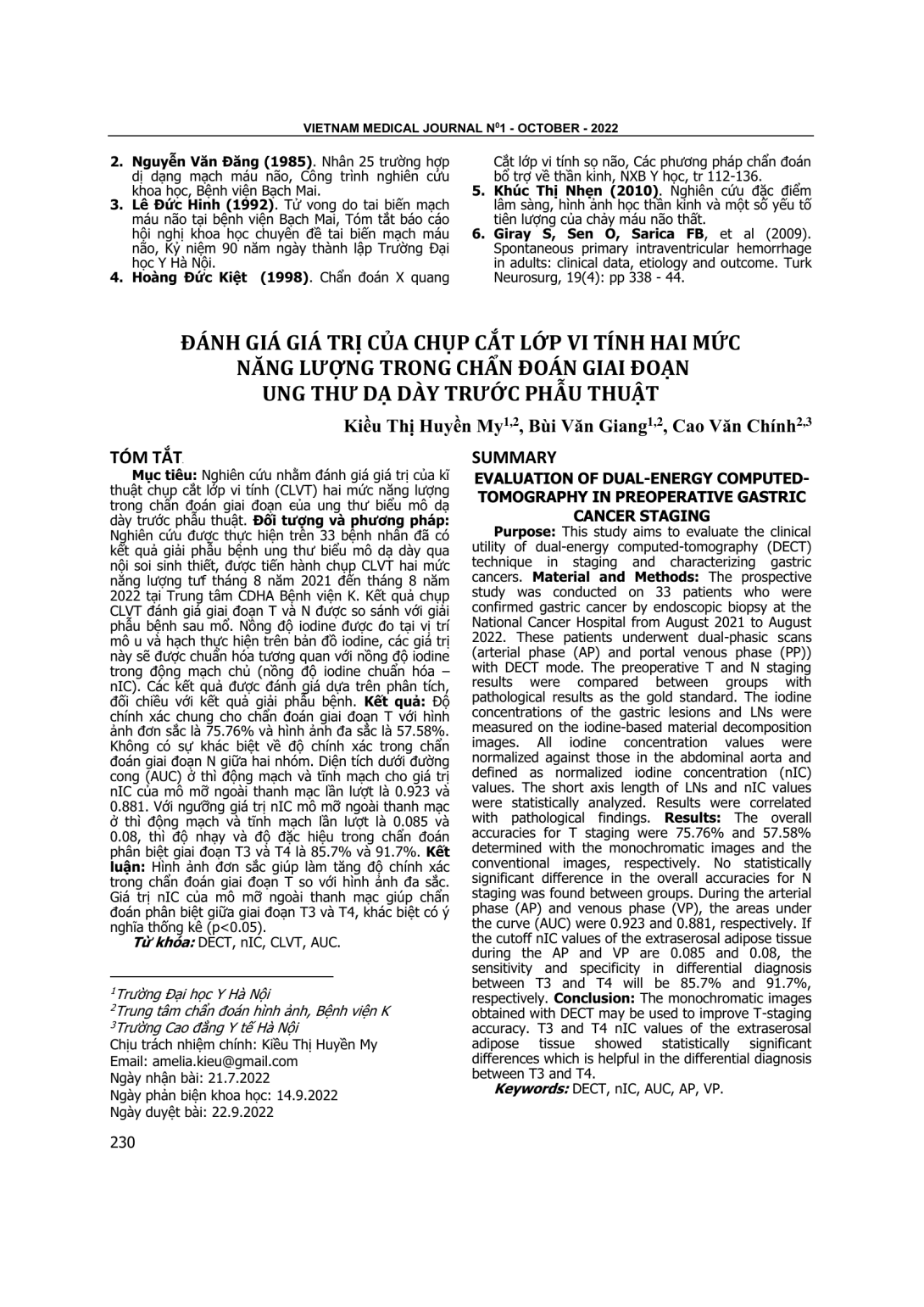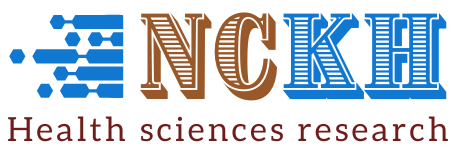
Nghiên cứu nhằm đánh giá giá trị của kĩ thuật chụp cắt lớp vi tính (CLVT) hai mức năng lượng trong chẩn đoán giai đoạn của ung thư biểu mô dạ dày trước phẫu thuật. Đối tượng và phương pháp: Nghiên cứu được thực hiện trên 33 bệnh nhân đã có kết quả giải phẫu bệnh ung thư biểu mô dạ dày qua nội soi sinh thiết, được tiến hành chụp CLVT hai mức năng lượng tưf tháng 8 năm 2021 đến tháng 8 năm 2022 tại Trung tâm CDHA Bệnh viện K. Kết quả chụp CLVT đánh giá giai đoạn T và N được so sánh với giải phẫu bệnh sau mổ. Nồng độ iodine được đo tại vị trí mô u và hạch thực hiện trên bản đồ iodine, các giá trị này sẽ được chuẩn hóa tương quan với nồng độ iodine trong động mạch chủ (nồng độ iodine chuẩn hóa – nIC). Các kết quả được đánh giá dựa trên phân tích, đối chiều với kết quả giải phẫu bệnh. Kết quả: Độ chính xác chung cho chẩn đoán giai đoạn T với hình ảnh đơn sắc là 75.76% và hình ảnh đa sắc là 57.58%. Không có sự khác biệt về độ chính xác trong chẩn đoán giai đoạn N giữa hai nhóm. Diện tích dưới đường cong (AUC) ở thì động mạch và tĩnh mạch cho giá trị nIC của mô mỡ ngoài thanh mạc lần lượt là 0.923 và 0.881. Với ngưỡng giá trị nIC mô mỡ ngoài thanh mạc ở thì động mạch và tĩnh mạch lần lượt là 0.085 và 0.08, thì độ nhạy và độ đặc hiệu trong chẩn đoán phân biệt giai đoạn T3 và T4 là 85.7% và 91.7%. Kết luận: Hình ảnh đơn sắc giúp làm tăng độ chính xác trong chẩn đoán giai đoạn T so với hình ảnh đa sắc. Giá trị nIC của mô mỡ ngoài thanh mạc giúp chẩn đoán phân biệt giữa giai đoạn T3 và T4, khác biệt có ý nghĩa thống kê (p<0.05).
This study aims to evaluate the clinical utility of dual-energy computed-tomography (DECT) technique in staging and characterizing gastric cancers. Material and Methods: The prospective study was conducted on 33 patients who were confirmed gastric cancer by endoscopic biopsy at the National Cancer Hospital from August 2021 to August 2022. These patients underwent dual-phasic scans (arterial phase (AP) and portal venous phase (PP)) with DECT mode. The preoperative T and N staging results were compared between groups with pathological results as the gold standard. The iodine concentrations of the gastric lesions and LNs were measured on the iodine-based material decomposition images. All iodine concentration values were normalized against those in the abdominal aorta and defined as normalized iodine concentration (nIC) values. The short axis length of LNs and nIC values were statistically analyzed. Results were correlated with pathological findings. Results: The overall accuracies for T staging were 75.76% and 57.58% determined with the monochromatic images and the conventional images, respectively. No statistically significant difference in the overall accuracies for N staging was found between groups. During the arterial phase (AP) and venous phase (VP), the areas under the curve (AUC) were 0.923 and 0.881, respectively. If the cutoff nIC values of the extraserosal adipose tissue during the AP and VP are 0.085 and 0.08, the sensitivity and specificity in differential diagnosis between T3 and T4 will be 85.7% and 91.7%, respectively. Conclusion: The monochromatic images obtained with DECT may be used to improve T-staging accuracy. T3 and T4 nIC values of the extraserosal adipose tissue showed statistically significant differences which is helpful in the differential diagnosis between T3 and T4.
- Đăng nhập để gửi ý kiến
